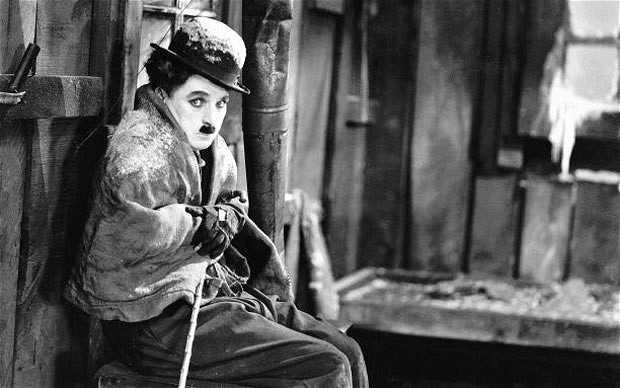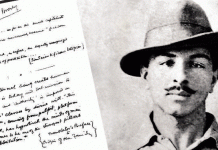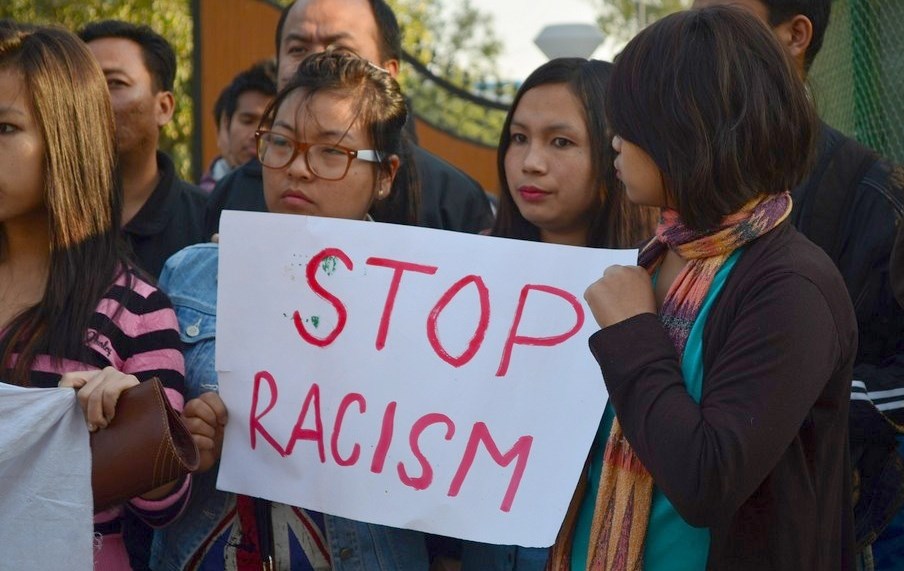Where is the farmer who cultivates the land and feeds the nation, why is the farmer so disillusioned and tired? The farmer has become literally absent from both the popular imagery of the nation and the literary imagination and this indeed is something to be concerned about. From poetry to politics- the neglect of the farming community is a trend with great implications.
Ananya Pathak is the Features Editor / The New Leam.
 Image Source : Commons.wikimedia
Image Source : Commons.wikimedia
Chiir ke saal ,ein do baar zamin ka siina
Dafn ho jaata huun…
(By piercing the earth’s heart twice in a year, I get buried) – Kaifi Azmi
[dropcap]T[/dropcap]his year alone the farmers have marched to the metropolitan cities of Mumbai and Delhi from different parts of the nation four times. The widespread anger and disillusionment prevalent among the Indian farmers has been articulated in the fact that thousands of them have decided to take a break from their fields even if it means losing days of income and coming out to the streets in order to be heard. The fact that our farmers have to come out of their workspaces and claim and beg for their rights despite the fact that each successive government promises them better returns and loan benefits and creates several attractive policies in their names, is nothing but a reminder of the state apathy toward the Indian farmer.
What does the farmer community denote for those in power? Perhaps only another vote bank that needs to be calmed down from time to time with lucrative promises and each time they take to the streets, the insistence is either on forcefully compelling them to return back or promising them the fulfilment of their demands to ensure that no further law and order problem takes place.
The urgency and last moment decisions that the farmers have to do with, point also towards the reality that in a nation like India- the farmer like other deprived categories such as women and the people of the North-East are a mere vote bank to be appeased from time to time. The structural and economic issues that need to be examined in order to bring about real transformation in the existence of farmers will mean that at the policy level real implementation has to unfold, land acquisition and distribution entitlements have to be fulfilled, economically a lot of support systems have to be built and initiatives in order to educate farmers have to be initiated.
The farmer is so integral to the Indian culture and wellbeing of the society, that to negate its needs is synonymous with crime. Today, the state shows apathy towards the plight of the farmer and the farmer who was once valorised as the tiller of the soil has now been pushed into the neglected corners of the middle class imagination. It is only when a group of farmers blocks the roads, cuts down milk and vegetable supply to the cities or when a farmer protest at the heart of the Indian metropolitan cities takes place, do we begin to pay attention to the farmer. On all other occasions, the farmer is absent despite being present.
This indifference to the farmer community is even visible in the music, literature and cinema of the contemporary age. At a significant juncture in Indian art, the farmer was valorised as the cultivator of land, as the food producer and as the lifeline of the Indian economy. But today we see hardly any art form revving and documenting the plight of the ordinary farmer.
India: the Farmers’ Country
In the way that India defined itself and looked for its origins, the farmer was central to its self-definition. With more than 70% of the Indian population working in the field of agriculture, the image of the farmer was synonymous with the image of the Indian nation. Across the length and breadth of the nation, several agricultural rites and rituals were celebrated, whether it was the festival celebrating the onset of the monsoon, the cutting of new crop or the harvesting season. The various Indian literary traditions and the folk traditions have regarded the farmer as a very important part of the society. In folk songs or high literature, the farmer has always been present. The invisibility of the farmer is a chaotic landscape.
Sketching India’s Hinterland
India’s vast hinterland, with the farmer at the centre of its existence began to find its all-pervasive presence especially in the literary and robust creations of the 20th century. Historically, this was the time when large scale social and agrarian reforms were taking place all across the world whether it was the Soviet Union or in Europe. On a global platform the presence of socialism and the example of the Soviet Union meant that a series of new possibilities became widely visible. It was the time when authors like Premchand painted the literary landscape of India as a nation with distinct and poised imageries of the farmer. This was the moment of coming out and bringing out the stories of India through the eyes of India’s farming society. It is difficult to forget the literary masterpieces of Sadgati, Do Bailon ki Katha and Kafan. The stories that Premchand composed were all located in the Indian hinterland and has farmers as their lead protagonists. The depiction of the exploitative upper caste landlords, the intoxicated pandits and the hardworking yet marginalised farmer depict a peculiar picture of the dynamics of caste and power within the Indian village society.
The world of the village is depicted as the exploitative universe where there is widespread poverty and inequality. The paradox of the village and the trauma that the farmer has to go through everyday resonate in the creations of Premchand. During the 1930s when the Progressive Writers’ Movement began, the crisis faced by the farmers began to be seen in the light of the neglect of the state and the state policies. The farmer in literary creations of this movement, was seen as cheated and dishonored by the nation-state and held this neglect responsible for the pathetic condition of the farmers.
Until this time, the crisis that was faced by the farmer was seen in isolation but this movement made people understand how the policies made at the top had an impact on the farmer at the bottom of the hierarchy. Poets like Iqbal captured this moment and wrote poetry that suggested inflammatory content and addressed the struggles of the peasants under the boots of imperialism. After independence, the movement prospered and became a greater champion of the farmers’ causes. In these times, the literary creation of a great poet Sahir Ludhianvi resonate-
Lahlahaate hue kheton pe javaanii kaa samaan
Aur dahqaan ke chappar mein na battii na dhuaan
(Every ingredient of the vitality of youth has been bedecked on the green fields and yet there is no roof over the farmer’s head nor fire in his hearth.)
Even as late as the 1980’s we see songs in Bollywood being written about the pride of being a farmer, in the iconic songs Mere desh ki dharti sona ugle ugle hire moti… we see how critically significant the farmer was to India’s literary imagination.
Today however the farmer seems to have altogether vanished from both the literary and the public imagination. Even the Indian film industry which was known for making films that were in tune with the issues that the common people in India were facing left the plight of the farmers completely unattended. In recent times very few films speak of the farmer or of the crisis that is all pervasive in rural India. Perhaps the attention has shifted from the agrarian village to the small town in many of critically acclaimed and so called realistic cinema whether it is a flick such as Gangs of Wasseypur or Mirzapur on Netflix.
The disappearance of the village from cinema and literature, poetry and art should not be seen in a vacuum. It is representative of the greater vacuum that we see in our society.
What is worth asking is why has Bollywood turned away from the farmer? Why is the village no more a site of creation? Does the disappearance of the village mean that we choose not to see it because it looks like an obstacle in the road to developed India? The disappearance of the village from cinema and literature, poetry and art should not be seen in a vacuum. It is representative of the greater vacuum that we see in our society. Paradoxically enough, neither the presence that farmers don’t matter nor the neglect of their political rights within the democracy will help us achieve the dream of a prosperous nation. Farmers are and will continue to be the food producers and the writers of Indian destiny.











